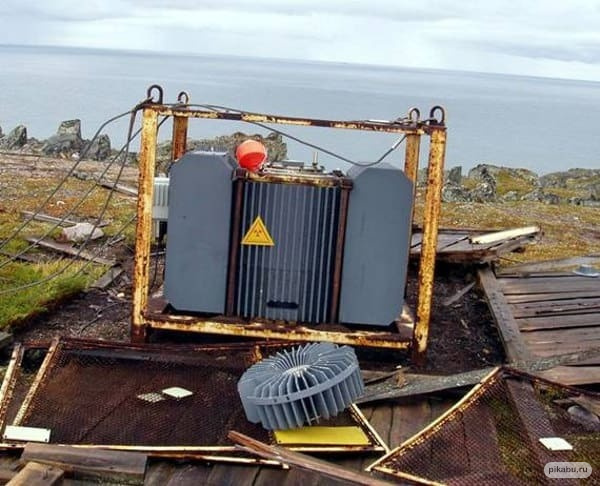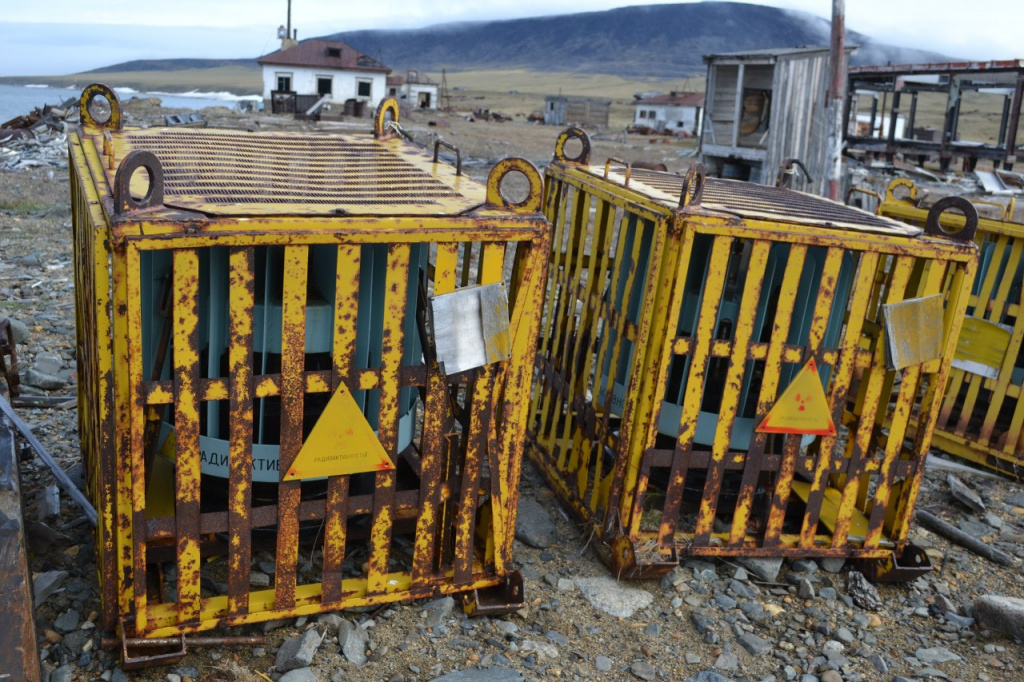In the 1970s, the USSR built a number of automatic lighthouses along the Northern Sea Route. Due to their remoteness from cities and any kind of civilization, they were equipped with radioisotope thermoelectric generators, providing the energy needed to operate without constant maintenance. This is why these facilities are often referred to as “nuclear lighthouses”. Nowadays, almost all of them are abandoned.

The Northern Sea Route is a dangerous sea route, which has been navigable all year round only since 1935 with the help of icebreakers. This route is extremely dangerous because of the complicated coastline. Soviet authorities decided to improve the safety of ships passing along this route by building a network of lighthouses. In the following years, they started building similar lighthouses in other parts of the Soviet Union.
However, this idea faced great difficulty in the beginning. Because of the unfavorable climate, the lighthouses were located far from settlements. Thus, it was virtually impossible to maintain them.
The only solution was to design fully automatic lighthouses that did not require constant maintenance, but only periodic inspections and maintenance. However, it required power sources (automatic lighthouses are very popular, but they must be permanently connected to the power grid). At this point, the Soviet space industry came to the aid, using radioisotope thermoelectric generators to power satellites.

Such machines produce electricity, as a result of radioactive decay, which is enough to power a lighthouse for a sufficiently long period of time. The isotopes used in most cases have half-lives ranging from several years to several decades. This allowed the lighthouse to be designed so that it could operate without additional maintenance for several years, and after that the fuel in the generators would be replaced with new ones.
The big advantage of this type of machine is the simple construction, which does not require constant maintenance. In addition, there should be no chain reaction or explosion in case of failure, damage to the generator or opening the casing. The USSR used strontium-90 isotope as a fuel with a decay time of 29 years.
During Soviet times, a total of 1007 RTGs were produced for ground operation and several dozen of these lighthouses were built (some of them were fully automated and some had small rooms for maintenance personnel who periodically inspected the lighthouse).
The nuclear lighthouses operated successfully until the 1990s. After the collapse of the Soviet Union, their maintenance was stopped, and therefore these facilities were abandoned to the mercy of fate, and when the fuel ran out, the lighthouses stopped working. The unfinished buildings gradually fell into disrepair and deteriorated. Those lighthouses that were a little closer to civilization were also looted. Most of the lighthouses were officially decommissioned, and their RTGs were taken into storage or disposed of. There have been cases of RTGs being dismantled by nonferrous metal hunters, causing fatal doses of radiation.

There were about a dozen cases of the lighthouse generators being turned off. Although they were no longer providing power, the generators were being irradiated all the time. As a result, they were not only dangerous to health, but could also be used to create small “dirty bombs”. Although most of the generators were officially identified. There were approximately 1,007 generators of this type, designed to be installed in lighthouses, buoys, etc. At least a few dozen were lost under not fully explained circumstances.
